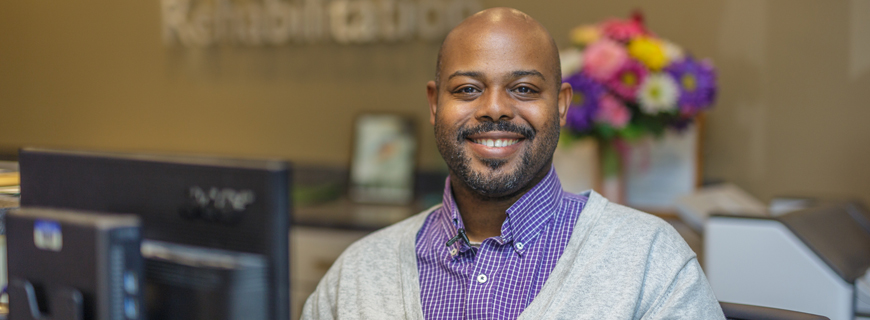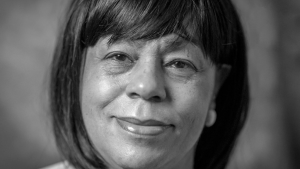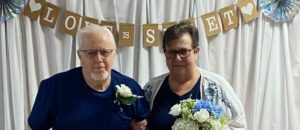Overcoming Stroke: Carl Davis

Back to physical health resource hub
While meeting with their church group one evening, Carl told his wife Danesha that he had the worst headache of his life. He apologized to the group and stepped outside, where he started sweating and vomiting. Danesha thought Carl might be having a heart attack and rushed him to the nearest emergency room.
By the time they arrived, Carl was unconscious. Emergency personnel whisked him away, leaving Danesha alone fearing the worst.
After an hour of waiting and worrying, Danesha was finally told “Carl had a stroke. It’s one of the worst types you could have – a hemorrhagic stroke.”
Fighting Against the Numbers
Only 15 percent of all strokes are hemorrhagic, but they are responsible for about 40 percent of all stroke deaths. Danesha remembers the neurologist saying, “IF he makes it out of this, he won’t be himself again. IF he makes it out, he’ll be paralyzed on his left side.”
Danesha wouldn’t accept IF. She said, “No! Carl has always been a fighter and he doesn’t lose easily.”
That fight would not be an easy one. Carl spent the next 21 days in a medically induced coma. When he slowly regained consciousness, Danesha knew there was a problem. Although Carl realized Danesha was someone important to him, he didn’t know her name.
Learning Again
Carl was, however, doing much better physically than anyone expected. Just over one month later, he was well enough to be transferred for physical rehabilitation at Brooks.
Carl worked hard in therapy, but was still having difficulty remembering prior events. His children like to tell the story about how he thought he was on a cruise ship. He could see the pond out his window and thought it was an ocean. “We can all laugh about it now, but at the time it was frightening,” said Danesha.
When Carl was discharged, his therapists gave him a variety of tools to help with memory recall once he returned home.
But the transition home was difficult for the entire family. Danesha needed to return to work, however, that meant leaving Carl alone all day. Carl’s mother suggested he volunteer at Brooks. When Danesha called to inquire, she was told about the Brooks Clubhouse.
A Place to Transition
The Clubhouse is a special community program for people with brain injuries. It provides support to help individuals regain social, physical, and cognitive abilities. Carl joined immediately.
“When Carl first came to the Clubhouse, he was very quiet. He didn’t show emotion and he lacked confidence,” said Kathy Martin, Clubhouse Manager. “But as he got more comfortable with the program and the other members, his personality and sense of humor started to emerge. Carl has now gone on to assume a leadership role at the Clubhouse, earning the nickname of Clubhouse CEO.”
Carl has been in charge of the front desk at the Clubhouse for several months now. He enjoys the structure and organization that it provides, as he remembers skills he used in past careers. He also meets with a vocational counselor every three months to help him transition back to work.
Before the stroke, Carl was a certified life coach. He has been able to use those skills to talk with other Clubhouse members. Each day, he shares a “Carl-ism” on the white board. These inspirational quotes bring hope to other members and set a positive tone for the day. He is also leading groups on various life skills, including goal setting. “As a life coach, you don’t have the answers. You help clients find it in themselves. That’s what I like to do here. Help others see things they may not have realized on their own,” said Carl.
“When Carl goes to the Clubhouse, he has a purpose. By helping others, it’s helping him to heal,” said Danesha.
We are proud to honor Carl as one of our 2016 Faces of Stroke for his courageous journey to recovery and the commitment he has towards helping others.


